Hole in the Clouds
Aug 18, 2009
Family life among the animals can get up close and personal with a webcam aimed 24/7 at a mud wallow in the forest claimed by a pack of wild boars, or a nest of sticks atop a telephone pole where a couple of storks have laid their eggs. But that was last summer and the summer before--this year, in Estonia, the webcams are mounted at an ostrich farm. One clutch of baby ostriches has hatched now, and you can watch the fluffy little bird-brained things squirming and snuggling under a heat lamp. Mom and Dad are outside in a paddock, incubating another nestful of eggs--looks like the male and female take turns sitting on the nest.
Go here to get your fill of ostrich video eye candy. The website is in Estonian, but even we Amurricans can figure out how to click on the pictures.
Hey, it's free--watch those ostriches all you want. The heatlamp is left on round the clock, so time zones won't keep you and those babies apart. Outside in the paddock, it gets light in Estonia around 10 or 11 p.m. Eastern daylight time. If you're up late, you can turn on the ostriches and watch them sitting on the nest and bobbing their heads a little, strolling along the fence line, grazing in the grass. Will you get bored? Yes--you're not an ostrich. But technology can hold your interest: instead of watching the ostriches in real time, you can click on another date and hour, and see what they were up to back then. By dragging your mouse across the bottom of the video frame, you can watch everything the ostriches did that hour in just a few seconds, and you can even watch them in reverse. Clouds will race across the sky, the sun will leap up from the horizon, and the ostriches will hop about right smartly.
If you could speed up the entire first year of video of a baby ostrich's life, you'd see it gain 100 pounds and grow as tall as an adult human. By age 3 or 4, mature ostriches can be 9 feet tall and weigh 350 pounds. They have three stomachs but no gall bladder, in case you were wondering.
There would be little point in speeding up video of an ostrich running; they can go from 0 to 27 miles per hour in a couple of seconds. Sometimes people race ostriches, with jockeys on their backs using saddles and bridles. They are said to be much more difficult to control than horses, but also much faster.
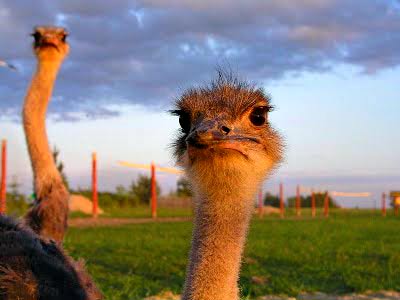
animal
ostrich
Estonia
(Image credit: unknown)
Oct 6, 2009
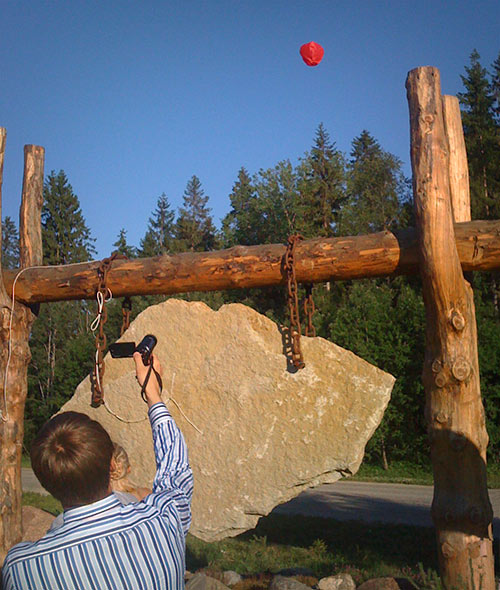
A wedding guest raises high his cellphone camera to snap a picture of a tiny red hot air balloon.
Inside the balloon is a scrap of paper bearing the bride's maiden name; since she is now acquiring a new name, her old name is set free to blow in the wind. Perhaps someone else can use it.
This scene is from a wedding last June in Estonia, where weddings and marriage are not as common as they are here in the U.S. I'm not sure if the balloon is an old tradition or a new one, but I am told it is an actual hot air balloon, heated above a small flame till it wafts away.
Estonia
wedding
(Image credit: Patrik Maldre)
Oct 31, 2009
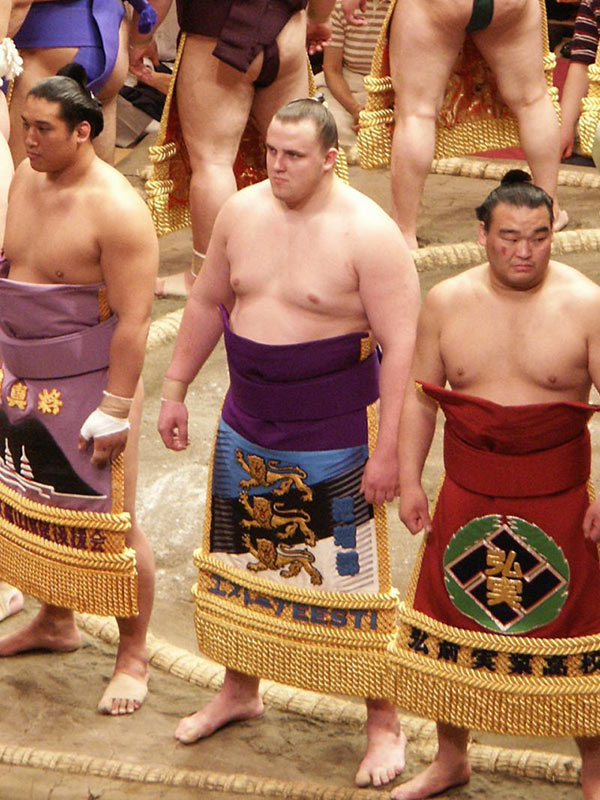
Kaido Hoovelson needed a stage name if he were going to get anywhere in the world of professional sumo wrestling; the name that stuck is Baruto, Japanese for Baltic.
Hoovelson was working as a nightclub bouncer in Estonia when his judo instructor suggested sumo as a good career move. Young men who are accepted into one of the "stables" of aspiring sumo wrestlers live and train together; they learn sumo technique and its cultural dimensions, and they get plenty to eat. Of course, newcomers--especially newcomers from foreign countries--could expect to be assigned chores, such as washing the clothes of the older wrestlers, and they would have to be tough enough to deal with hazing as well as wrestling.
But for Hoovelson to really succeed as Baruto, then first and foremost he would have to learn Japanese. His first word was "Itai": ouch. All instruction was in Japanese, as was all interaction day and night among the wrestlers in his stable. Within a couple of years, he became fluent enough to give TV interviews at tournaments, which turned out to be a good thing because he rose quickly to sumo stardom, even gaining his own fan club among young Japanese.
Beginning in the 1990s, a few foreigners have been among the 800 professionals working their way up the sumo ranks; two Hawaiians and a Mongolian have become champions of the topmost tournament league, Baruto, professional sumo's first Estonian athlete, is in the top league now and among the contenders for the overall championship.
In a profession of huge men, Baruto is among the tallest--6 foot 4--and as heavy as the heaviest--about 360 pounds. He has thrived on the Japanese meat stew that the wrestlers eat several times a day, but he has also sought out Western restaurants for a taste of home. In a Russian restaurant in Tokyo, he met Elena Tregubova from Vladivostok, the daughter of the proprietor. They were married last February, and Baruto insists he'd like to have five children with her.
A sumo match begins with several minutes of pacing and scowling. The actual fighting may last only a few seconds. It's all over as soon as one wrestler pushes the other out of the 15-foot circle or forces him to touch the mat with any part of his body other than his feet.
The picture shows Baruto participating in the ceremony associated with a sumo tournament. This video shows a match last month in which Baruto (in blue) needed only about 3 seconds to win; you can discern the finer points of his technique in the slow-motion replays at the end of the clip.
sports
Estonia
Baruto
Kaido Hoovelson
sumo
Japan
Aug 27, 2012
 Kaspar Maldre, looking wise beyond his weeks.
Kaspar Maldre, looking wise beyond his weeks.
Estonia
baby
child
Kaspar Maldre
May 25, 2014
 When last we glimpsed young Kaspar in this space, he was a mere babe, a bit timid and in need of a nap. Now, less than a year later, he regards us with a bold, steady gaze, wide awake and prepared to tackle any challenge. Yes, he's still in diapers, and yes, he's in his jammies, but hey. The man's got tools.
When last we glimpsed young Kaspar in this space, he was a mere babe, a bit timid and in need of a nap. Now, less than a year later, he regards us with a bold, steady gaze, wide awake and prepared to tackle any challenge. Yes, he's still in diapers, and yes, he's in his jammies, but hey. The man's got tools.
Estonia
tools
baby
child
Kaspar
pajamas
Tallinn
(Image credit: K. Maldre)
Jan 7, 2015
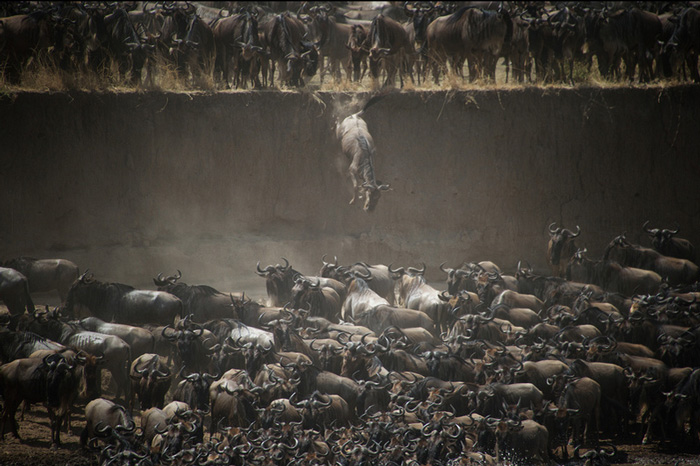 Above, wildebeest cross the Mara River during their annual migration northward from the Serengeti in Tanzania to the Masai Mara in Kenya. An estimated two million animals, mostly wildebeest but also including hundreds of thousands of Thompson's gazelle, zebra, and eland, make this long trek every year during the dry season, as they seek greener pastures; their navigation techniques are not fully understood, but one strategy they seem to follow is to head toward thunder and lightning.
Above, wildebeest cross the Mara River during their annual migration northward from the Serengeti in Tanzania to the Masai Mara in Kenya. An estimated two million animals, mostly wildebeest but also including hundreds of thousands of Thompson's gazelle, zebra, and eland, make this long trek every year during the dry season, as they seek greener pastures; their navigation techniques are not fully understood, but one strategy they seem to follow is to head toward thunder and lightning.
This photo, by Nicole Cambre, took first place in the "Nature" category of National Geographic's 2014 photo competition, which attracted more than 10,000 entrants from 150 different countries.
Below, ice on a window in Tabasalu, Estonia, propagates in a crystal form that the photographer, Maie Kinmann, calls "Dragon." This photo won honorable mention in the "Nature" category.

Estonia
National Geographic
ice
window
Mara River
wildebeest
Tanzania
Tabasalu
migration
Serengeti
(Image credits: top,Nicole Cambre; bottom, Maie Kinmann)
Jun 8, 2016
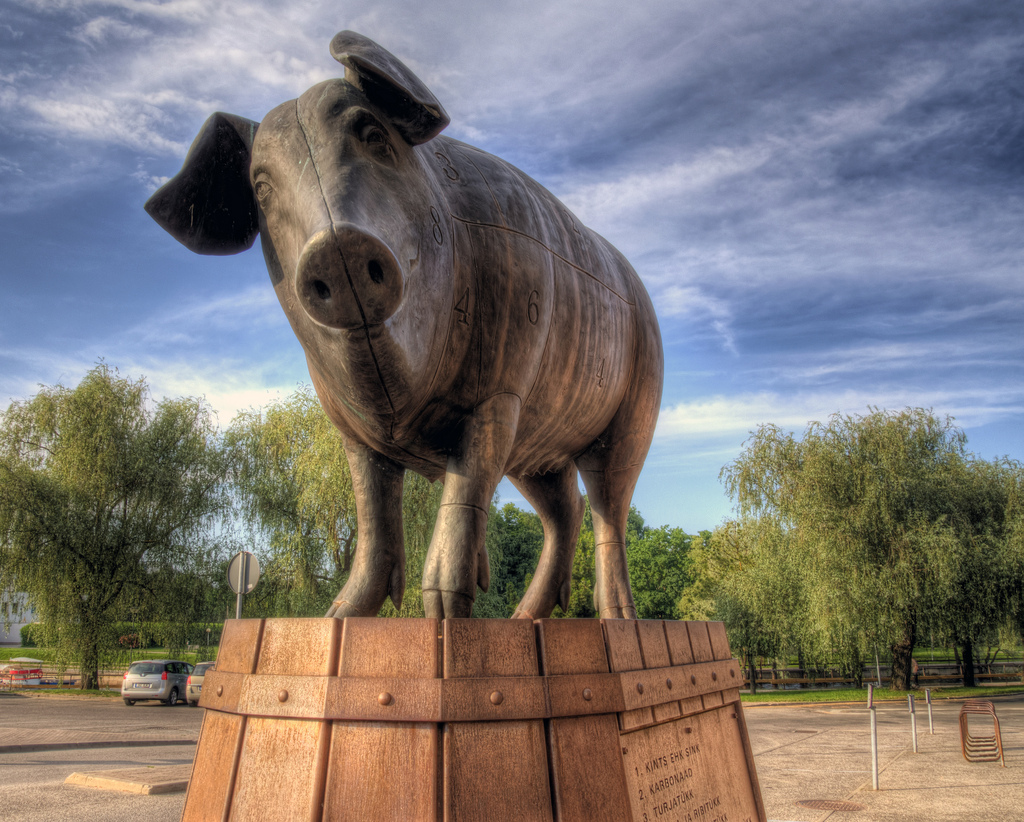 They go to market, of course. Above, in Tartu, Estonia; below, here in Philly at Reading Terminal Market.
They go to market, of course. Above, in Tartu, Estonia; below, here in Philly at Reading Terminal Market.
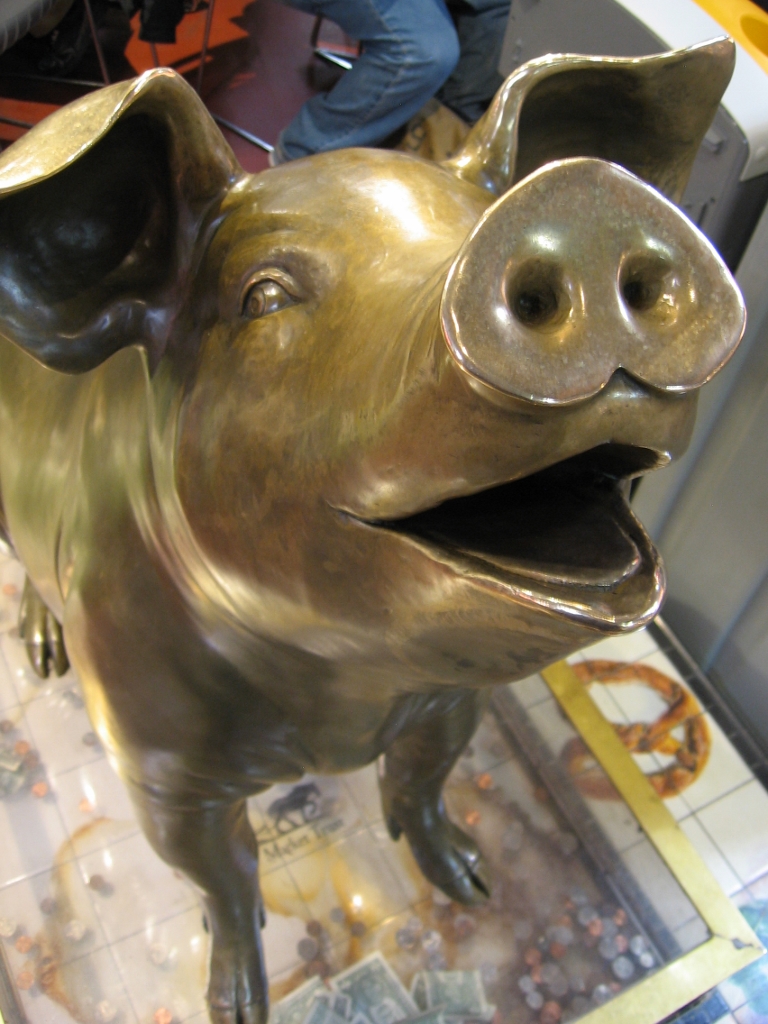
Estonia
animals
sculpture
Philadelphia
pigs
bronze
public art
Tartu
Reading Terminal Market
Mar 8, 2018
 Four-year-old Rainer sits on one of the snow-covered rocks in a quiet, slushy cove at the edge of the Baltic Sea near Tallinn, Estonia.
Four-year-old Rainer sits on one of the snow-covered rocks in a quiet, slushy cove at the edge of the Baltic Sea near Tallinn, Estonia.
Estonia
winter
Tallinn
Rainer
sea ice
Baltic Sea
(Image credit: K. Maldre)



 When last we glimpsed
When last we glimpsed  Above, wildebeest cross the Mara River during their annual migration northward from the Serengeti in Tanzania to the Masai Mara in Kenya. An estimated two million animals, mostly wildebeest but also including hundreds of thousands of Thompson's gazelle, zebra, and eland, make this long trek every year during the dry season, as they seek greener pastures; their navigation techniques are not fully understood, but one strategy they seem to follow is to head toward thunder and lightning.
Above, wildebeest cross the Mara River during their annual migration northward from the Serengeti in Tanzania to the Masai Mara in Kenya. An estimated two million animals, mostly wildebeest but also including hundreds of thousands of Thompson's gazelle, zebra, and eland, make this long trek every year during the dry season, as they seek greener pastures; their navigation techniques are not fully understood, but one strategy they seem to follow is to head toward thunder and lightning.


